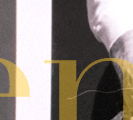 |
||||
      |
||||
|
(redefining luxury, cont.) West Bend While Madison’s developers continue to bring luxury living downtown area, some developers are building elsewhere. With a population of only 28,152, West Bend, located 30 minutes outside of Milwaukee, is embarking on a downtown revitalization that would rival that of bigger cities. To revamp West Bend and expand its downtown area, the city plans to redevelop real estate located around the outside of the existing city center. The project consists of four different construction sites. Along the Milwaukee River, 900,000 square feet of industrial space and a train switching station will be converted into residential condominiums and apartments, office and retail space, a home for the YMCA and a performing arts center. To the west of the river, an outlet mall will be demolished to make way for a convention center, upscale hotel, and restaurants. When the project is complete planners the area will house 466 condominiums ranging in price from $160,000 to $360,000, as well as 50 apartments and more retail and office space. Merging residential and commercial space is a strong attempt to draw more people from city suburbs and get business travelers to stay in the downtown area. “You’re going to see a very strong downtown community. You’re going to see West Bend as a destination spot,” Mayor Michael Miller says. Trend continues Today, one in six Americans lives in a community living space, which include co-ops, condominiums and other forms of housing. The NAR estimates that number will increase to represent one in three Americans. But while the NAR believes the condominium trend will continue to thrive for years to come, the outlook for the market in individual cities is unclear. In Madison, much of the city’s unique charm comes from its quaint buildings and businesses. Yet with the skyline rapidly evolving to include less-modest style housing and more high-rises, city planners worry about the changing face of the city and the market outlook for such developments. “There is a lot of good housing, but residents may need something else,” says Senior Planner of the City of Madison, Department Planning and Development Mike Waidelich. Although urban living promotes an entertaining and cultural lifestyle with a different restaurant on every corner, it does not always allow large corporations or other businesses that could create jobs to settle in the city, creating jobs for everyone. And for a city that has become known for its many parks and bike trails, the resurgence of inner city living and downtown renewal has some planners worried about the abundance of urban development and the space it takes away from building more of the outdoor recreation areas that may be important to some residents. The city does not possess the hurried, hustle and bustle mood like that of Chicago or New York and for the most part, it shouldn’t. Much of the attractiveness of Madison is derived from the city’s laid-back cultural atmosphere and variety of things to see and do. Many residents do not wish to witness the death of the old Orpheum Theater or the restaurants that regularly serve avocado and peanut butter sandwiches to make way for these new high-end complexes. To thrive, these building should embrace the atmosphere of Madison rather than make it something it’s not. |
|
|||
<<previous 1 | 2 | 3 |
|||||
|
|||||